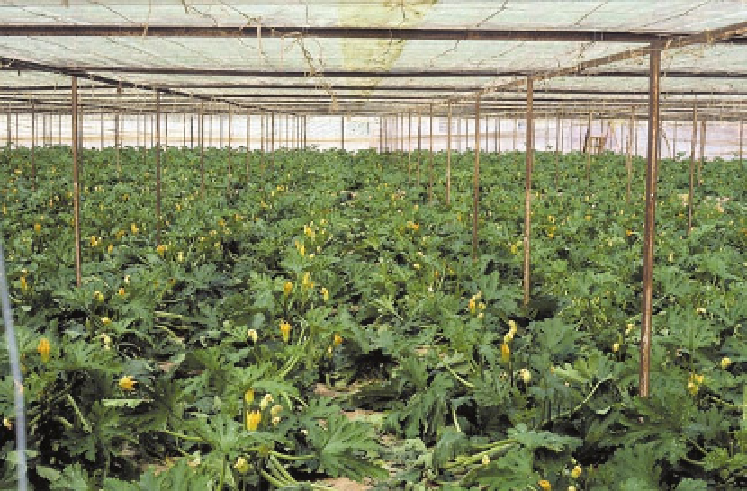Agriculture Reference
In-Depth Information
Photo 14.4.
Conventional flat-roofed low-cost parral-type greenhouse.
costs can vary greatly due to the differing
levels of investment and the expected use-
ful life of the technological package.
For a low-cost parral-type greenhouse,
without auxiliary climate control equip-
ment, the fixed costs in the year 2000 are
of the order of €0.91 m
−2
year
−1
; the main
components comprising depreciations of
the structure (with 38.3%) and the cost of
the plastic film (27.1%) (Aznar, 2000). In
these greenhouses, the fixed costs represent
about 21% of the average total cost of pro-
duction (Aznar, 2000).
In higher technology Mediterranean
greenhouses, these fixed costs can increase
significantly, even reaching 40% of the total
cost for a pepper crop (Caballero and
Miguel, 2002).
There is a wide range in variable costs
as these vary depending on the horticul-
tural species being considered, and also on
the yield, which is determined by the cul-
tivar and growing cycle (Tables 14.4-14.8),
as well as on the technological level of
the greenhouse. Market conditions some-
times limit the length of the production
cycle and, therefore, the yield, modifying
the variable costs. In general, there is a lot
of variability in the described costs
(Tables 14.4-14.8).
In low-tech greenhouses, without heat-
ing, the main variable cost (per unit of
harvested product) is labour (salaries), espe-
cially in green bean, where it involves
78.3% of the total variable costs, followed
by cherry-type tomato and short cucumber
(spring cycle) (Tables 14.4-14.8). The differ-
ences between labour costs within the same
species, besides depending on the cultivar
or commercial type grown in the case of
tomato, conventional type or cherry-type
(Table 14.4), are influenced by the harvest-
ing method (one by one or trusses), as has
been described by Berenguer
et al
. (2003).
The following variable costs in order of
importance, after the salaries, are fertilizers,
seeds or seedlings and pesticides, for the
majority of the mentioned crops (Tables
14.4-14.8). Similar results have been quan-
tified in other cost studies (Cañero
et al
.,
1994; Caballero and Miguel, 2002).
Water has little influence on the total
variable costs, not exceeding 7.3% in any
case (Tables 14.4-14.8), so there is no incen-
tive for the grower in terms of savings
(Martínez-Paz and Calatrava-Requena, 2001;
Colino and Martinez-Paz, 2002).
The costs structure, both fixed and
variable, for greenhouse cultivation is
altered when conventional soil cultivation

